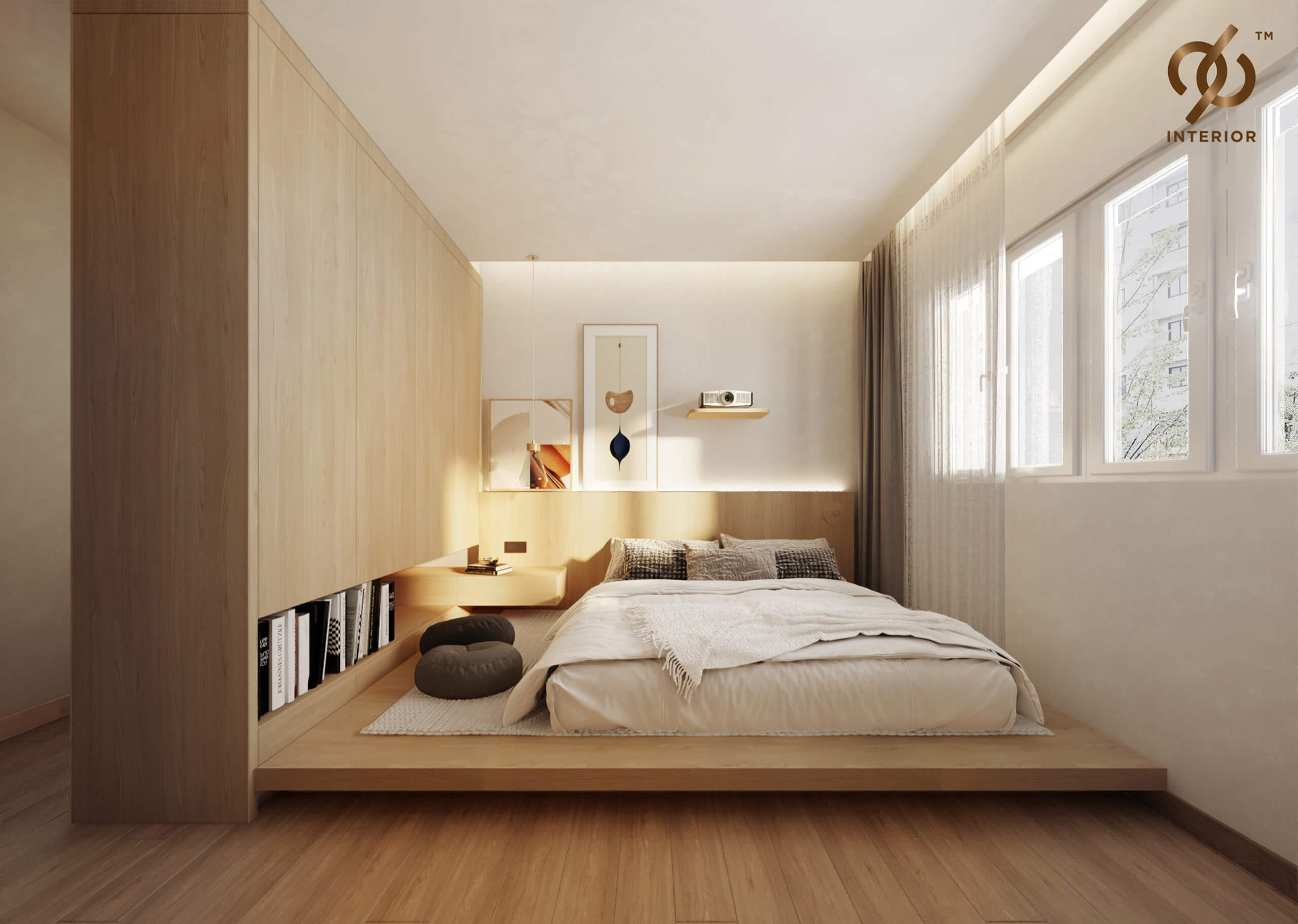Defining Japanese Minimalist Interior Design

Japanese minimalist interior design is a design style that emphasizes simplicity, functionality, and the use of natural materials. It is inspired by traditional Japanese culture and aesthetics, which values harmony, balance, and the beauty of imperfection.
The Japanese minimalist interior design aesthetic emphasizes simplicity, functionality, and natural materials. It incorporates elements such as clean lines, open spaces, and a neutral color palette. To capture the essence of this style in your own designs, consider exploring the principles of interior design drawing.
This technique allows you to visualize and plan the layout, furniture arrangement, and lighting in your space, ensuring a cohesive and harmonious result that embodies the tenets of Japanese minimalism.
The key principles of Japanese minimalist interior design include:
- Simplicity: Japanese minimalist interiors are characterized by their simplicity and lack of clutter. Furniture and décor are kept to a minimum, and each item is chosen for its functionality and aesthetic appeal.
- Functionality: Every element in a Japanese minimalist interior serves a purpose. Furniture is designed to be comfortable and practical, and décor is often chosen for its ability to add warmth and texture to a space.
- Natural materials: Japanese minimalist interiors make extensive use of natural materials, such as wood, stone, and paper. These materials create a sense of warmth and connection to nature.
Japanese minimalist interior design has its roots in traditional Japanese culture and aesthetics. The Japanese tea ceremony, which emphasizes simplicity, harmony, and the appreciation of nature, has been a major influence on the development of this design style.
Japanese minimalist interior design is a timeless style that emphasizes simplicity, functionality, and natural materials. The use of neutral colors, clean lines, and uncluttered spaces creates a sense of serenity and calm. If you’re looking for ways to incorporate this aesthetic into your home, consider adding world best wallpaper with subtle patterns or natural textures.
This will add a touch of elegance and sophistication without overwhelming the minimalist design.
Some of the most renowned Japanese minimalist architects include:
- Tadao Ando: Ando is known for his minimalist concrete buildings, which often feature large windows and open spaces.
- Shigeru Ban: Ban is known for his innovative use of paper and other sustainable materials in his architecture.
- Kengo Kuma: Kuma is known for his use of natural materials and his focus on creating buildings that are in harmony with their surroundings.
Essential Elements of Japanese Minimalist Interiors: Japanese Minimalist Interior Design

Japanese minimalist interiors embody the principles of simplicity, functionality, and natural beauty. They prioritize natural materials, clean lines, and open spaces to create a serene and harmonious living environment.
Natural Materials
Natural materials are the foundation of Japanese minimalist interiors. Wood, stone, and bamboo are commonly used for their organic textures and earthy tones. Wood brings warmth and texture, stone adds durability and a sense of permanence, while bamboo introduces an element of lightness and flexibility.
Clean Lines and Open Spaces
Clean lines and open spaces define Japanese minimalist interiors. Furniture and decor are simple and uncluttered, allowing the space to breathe and creating a sense of spaciousness. Straight lines and sharp angles are favored, avoiding unnecessary embellishments or distractions.
Natural Light
Natural light plays a crucial role in Japanese minimalist interiors. Large windows and sliding doors allow ample sunlight to flood the space, creating a bright and airy atmosphere. The use of natural light also enhances the visual appeal of natural materials, showcasing their textures and colors.
Applications and Benefits of Japanese Minimalist Design

Japanese minimalist design, characterized by its simplicity, functionality, and emphasis on natural materials, offers numerous benefits when incorporated into home decor. By embracing its principles, homeowners can create spaces that promote tranquility, enhance focus, and evoke a sense of spaciousness.
The applications of Japanese minimalist design extend across various areas of interior design:
Living Room
- Emphasize open floor plans and natural light to create a sense of spaciousness.
- Incorporate low-profile furniture and clean lines to minimize visual clutter.
- Use neutral color palettes and natural materials such as wood, stone, and bamboo.
Bedroom
- Create a calming and restful atmosphere with a simple bed frame and neutral bedding.
- Incorporate natural elements such as plants and wooden accents to connect with nature.
- Minimize distractions by removing unnecessary items and focusing on essential furniture.
Kitchen
- Maximize functionality with efficient storage solutions and clutter-free countertops.
- Use natural materials such as wood or stone for cabinetry and countertops to create a warm and inviting space.
- Incorporate plants or fresh flowers to bring a touch of nature indoors.
Beyond its aesthetic appeal, Japanese minimalist design offers several benefits:
Increased Tranquility
The absence of clutter and the emphasis on natural elements create a calming and serene atmosphere, reducing stress and promoting relaxation.
Improved Focus
By eliminating distractions and focusing on essential items, Japanese minimalist design helps improve concentration and productivity.
Sense of Spaciousness, Japanese minimalist interior design
Open floor plans, clean lines, and neutral colors create an illusion of space, making even small rooms feel larger and more inviting.
While Japanese minimalist design offers numerous advantages, it also presents certain challenges:
Potential Challenges
- Difficulty in letting go of possessions and maintaining a clutter-free environment.
- Potential for the space to feel cold or impersonal if not executed thoughtfully.
- Incompatibility with certain lifestyles that require more storage or visual stimulation.
Overcoming Challenges
- Start by decluttering gradually and focusing on essential items.
- Incorporate personal touches and natural elements to add warmth and character.
- Consider using Japanese minimalist principles as a guiding philosophy rather than a strict set of rules.